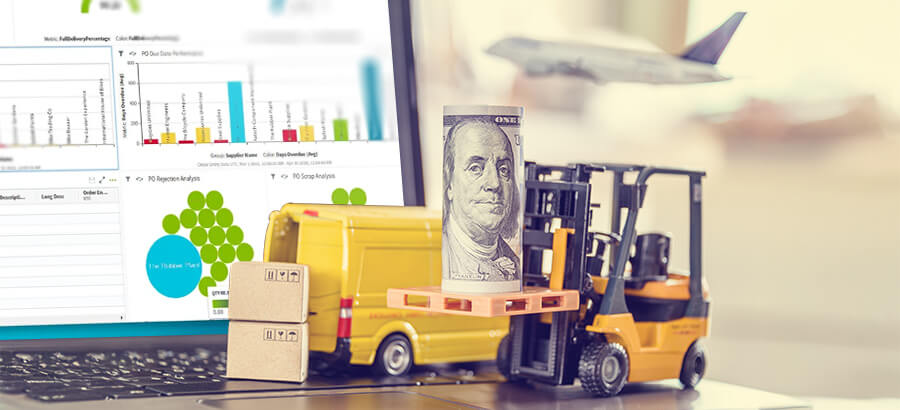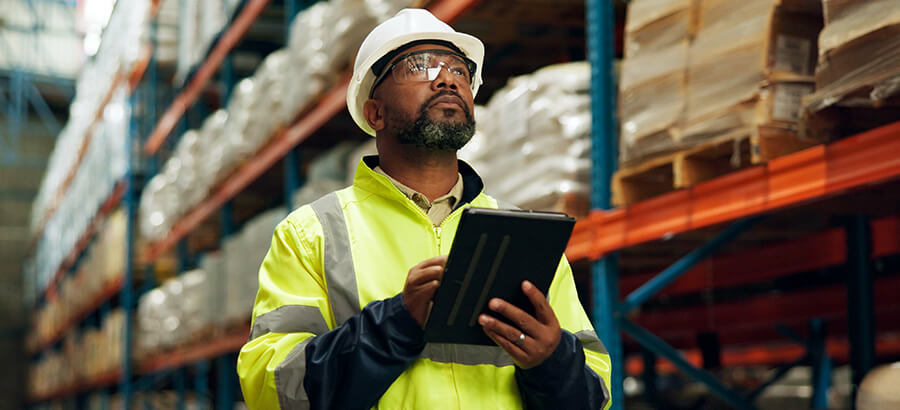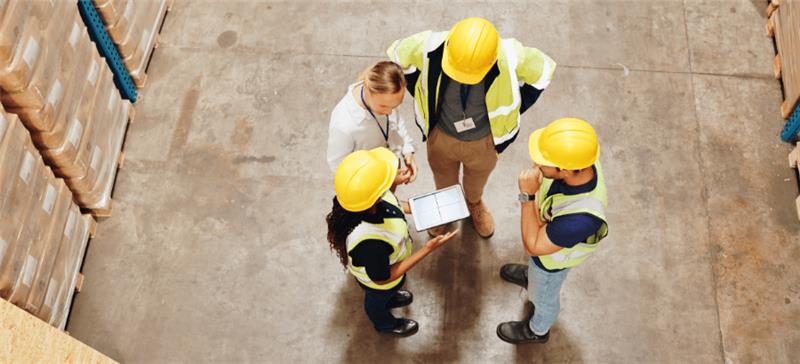Here’s the thing about enduring a crisis: sometimes, you end up better than you were when it started. So says research from PWC that shows that, despite nearly seven in ten businesses facing at least one major crisis in the five years leading up to COVID-19, 42% reported they exited the crisis “in a better place.”
For manufacturers, the pandemic has sparked demand and supply shocks as global needs rapidly shifted all at once. In response, we’ve seen manufacturers pivot to new markets as disruptions cascade up and down the entire supply chain.
Those shocks and disruptions reveal something more, though: where the gaps are in our manufacturing processes. They tell us where we can improve – and where we can get ahead –and one of the most important areas is our warehouse management processes.
So amid a crisis of this magnitude, how do you set yourself up for post-crisis success? How do you join the 42% of businesses that emerge stronger than before?
Stop profitability leaks in your warehouse by embracing digitalization
If you wait until the disruption ends and clear signs of recovery begin before closing those gaps in your manufacturing business, you’re already too late. Unoptimized warehouse processes will significantly increase costs and decrease profits. Digital transformation – in particular, with technologies that give you visibility into your warehouse management and supply chain – is a key way to give your business the edge both during and after a disruption through optimization and efficient resource management.
When everyone on and off the floor has access to real-time information about what’s going on in your warehouse, you give yourself a competitive edge with:
- Fewer errors: In general, humans make one data entry error every 300 characters. Digital tools capture data automatically and in real-time. This prevents inaccuracies and problems such as inventory stockouts or unnecessary reorders.
- Save time: Manual entry causes delays because important information ends up sitting in someone’s inbox or on a piece of paper on their desk. For example, delays in order picking and delivery. Using real-time processing in your ERP system eliminates wasted time and delays.
- Save money: When your inventory is inaccurate, you waste money by either inadvertently ordering more than needed, or by expediting due to unexpected shortages (do both of these sound familiar?). Going digital increases accuracy, which saves money.
- Improved customer and employee satisfaction: When a customer’s shipment is late, or is missing some items, or has the wrong items, it causes them frustration, along with your employees who have to correct the error in a panic. With real-time, accurate inventory data, everyone’s lives are better – customers are happier (and spend more money with you), and employees are more efficient and less stressed.
5 ways you can start transforming your warehouse today
To begin the digital transformation in your warehouse, one of the best places to start is by adopting barcode technology integrated to your ERP. This helps eliminate mistakes, prevents mis-picks, improves lot traceability and streamlines cycle counting.
But where do you start? Here are five tips Ryan Wieneke, Product Manager at riteSOFT, shared with us during a recent webinar.
- Streamline processes by going paperless
The goal of going paperless is to reduce or eliminate the data lag and inaccuracies that happen when paperwork sits on peoples’ desks waiting to get keyed into other systems.
Integrating barcode scanning into your ERP is a simple way to start capturing reliable data about your on-the-floor transactions like cycle counting tickets, pick slips, delivery notes, purchase orders and more. Scan a barcode and the system updates on-the-spot, so that everyone can see what’s happening in real-time.
- Save time by automating your labels
Barcode reading devices scan data immediately into your ERP. But before you can scan an item, you’ll need a solid process around barcode labels: when and where do items receive their labels; what kind of information needs to be captured; what label format to use.
What kind of barcode is best for the job? 1D barcodes are what most people think about when they hear “barcode” – a series of lines and spaces that encode a single piece of information. But they’re not always optimal, since a single label could require separate barcodes (and therefore several scans) to capture all the necessary details of a transaction.
2D barcodes are fast becoming a favourite for their ability to simplify and expedite the scanning process. Like QR codes, they use patterns of shapes to capture multiple pieces of information such as lot number, SKU code and quantity, allowing operators to capture all three in a single “smart” scan. Unlike their 1D counterparts, 2D barcodes also save space on your labels and scan more accurately from both short and long distances.
- Get more visibility by capturing data in real-time
Nothing is more frustrating than your front office staff having to call the warehouse to double-check if an item is in stock before taking an order. Using barcode scanners eliminates this wasted time and frustration by ensuring accurate inventory.
- Reduce wasted time with barcode scanning
We’ve all struggled with telephone tag. A CSR calls a warehouse manager to check on an order’s status, but they get voicemail instead. The warehouse calls the CSR to get clarification on an order, but the CSR is on the phone. Multiply this back-and-forth across many employees, many times a day – lots of wasted time.
Barcode scanning ensures that both the office and the warehouse have accurate, real-time information. No more telephone or email tag.
- Get more accurate by validating as you receive, move and pick
The best place to catch errors? At the physical point of work. Barcode scanning validates SKU’s, locations, lot and serial numbers, and more, immediately as the operator scans them.
Try to pick the wrong item and the operator will receive an instant notification. This prevents errors such as shipping the wrong item to the customer (and returns are costly margin-killers), and counting the wrong items during cycle counts (which results in inaccurate inventory and all the myriad problems resulting from this).
ROI you can count on
What kinds of results can you expect by going paperless in your warehouse? Companies that have already integrated barcode scanning with their ERP systems as part of their digital transformation efforts report a wide range of benefits, including:
- A 90% increase in visibility when employees have access to real-time information from a single source of truth
- Greater inventory accuracy, especially during end-of-year counts when troubling inventory discrepancies often build up
- Improved workflows that create a more efficient picking process with less wasted time on double-checking information or manual entry
- Improved productivity and operational efficiency because employees aren’t wasting time on data entry
- Better customer service and happier customers, and isn’t that why you’re in business?
These are the types of results that make companies better and stronger after managing through a crisis like COVID-19. Using integrated ERP and barcoding systems increases efficiency and saves time and money. This puts you in a strong position to not only survive the pandemic, but to be one of the 42% of companies that improve their revenue and gain competitive advantage.
For more ideas on how your warehouse could benefit from a digital transformation, catch our webinar, Transform your Warehouse in 2021. Go Digital.






